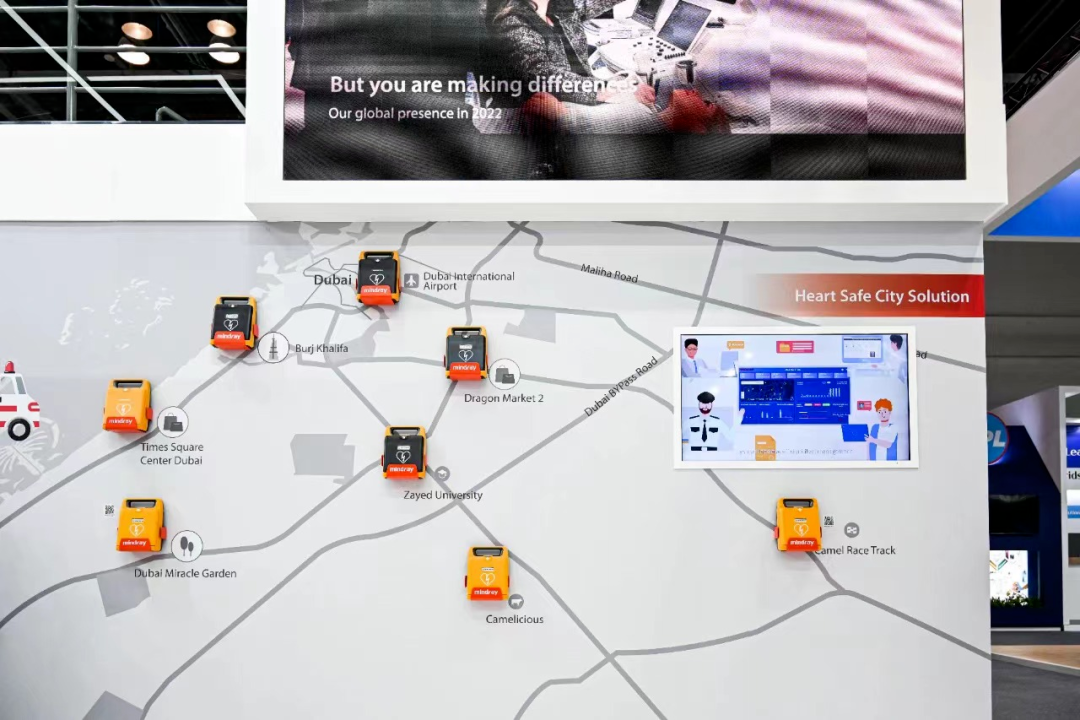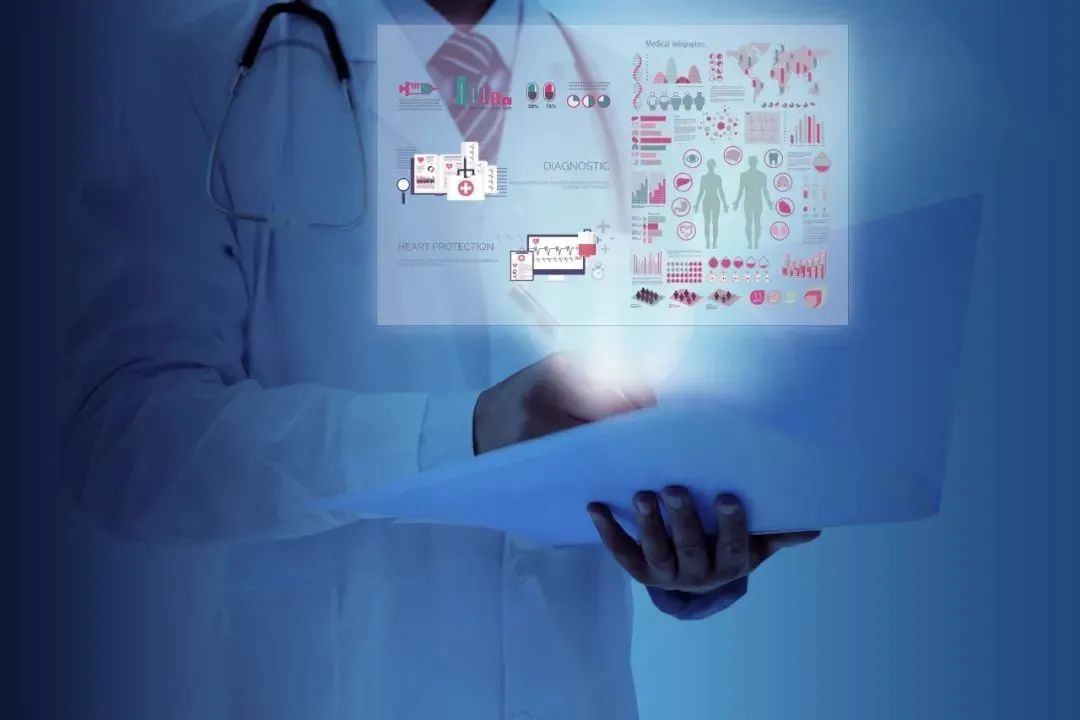9F, Zhongrui Jumei Building, 68 Jiuzhang Road, Suzhou Industrial Park, Jiangsu Province
Medical information
Seven Future Trends of Smart Healthcare in 2023
Introduction
In the past few years, driven by capital, innovation in the medical industry has been vigorous, but it has also led to the emergence of an IPO oriented accelerated model. Next, the industry will enter a rational stage of development and return to a basic value position. However, the "sunrise industry" is still the "sunrise industry", and opportunities for industrial development are still emerging. Against this backdrop, the trend of digital development in the healthcare industry in 2023 is becoming increasingly clear
01 | Development trend of digital therapy: The "data+algorithms+services" model will bring an innovative ecosystem, and the industry role based on data+needs to be supplemented and improved
Chronic diseases, psychology, tumors and other fields are the most concerned
Currently, digital therapy in China is too early, and the path to research, development, promotion, and commercialization of related products needs to be explored too much. Rough path prediction can be performed on the domain from three levels,
1) Industry foundation, which determines whether there are prerequisites for development in this field
2) Enterprise supply, determining whether there are sufficient human, financial, and resources to enter the field in the short to medium term
3) Patient needs determine the business path and market potential of a relatively mature product. In addition, the field of cancer is relatively special, and its long-term management needs to focus on the development of complications. Therefore, digital therapy based on full course management is also a key exploration direction for enterprises

Commercial route prediction, commercial insurance at its own expense is the optimal solution at this stage
After the preliminary validation of the effectiveness of digital therapy, the business paths that can be realized will come from the following five ways: 1) Commercial insurance cooperation: Digital therapy is managed and controlled through software+drugs+hardware, which can directly assist commercial insurance in achieving risk control, while using rational medication to reduce the compensation rate. 2) Patient self financing: It will take a long time to achieve this type of business path, and its future form is more like a charging model between household medical devices and software, such as membership and service fees. 3) Medical insurance cooperation: If the cost control ability is verified after the effectiveness verification, it is expected to enter medical insurance. 4) Employers' cooperation: For enterprises with perfect flexible benefits, provide relevant benefits for their employees. 5) Government cooperation: For areas such as rehabilitation, disability, and the elderly, public welfare or government subsidies are used to provide relevant services for special groups. This type of income does not have a large-scale trend
02 | Future trend of smart hospitals: hospitals are accelerating their development from "informatization" to "digital intelligence", with underlying data gradually improving
The digital exploration of public hospital clinics is mostly led by Class III hospitals. After the cases are relatively mature, they will be extended to subordinate institutions. There are many directions for digital exploration in hospital clinics, including multiple directions such as the 5-level construction of electronic medical records, interconnection, auxiliary decision-making, remote diagnosis and treatment, intelligent management of the Internet of Things, and integration of hardware and software. Among them, electronic medical records and interconnection are the most mature because they have clear rating indicators and are closely related to the rating of medical institutions themselves. According to data, by 2020, a total of 172 hospitals nationwide had obtained electronic medical record ratings, of which 145 were Grade III hospitals, accounting for 84.3%; There are 162 tertiary hospitals, accounting for 94.2%. For connectivity, it increased from 9 in 2016 to 148 in 2020
At the same time, clinical assisted decision-making and management operational decision-making require the support of electronic medical records and interconnection
03 | Future trend of clinical digitization: establishing standards and establishing intelligent and diversified business models with the participation of multiple entities
Driven by internal and external factors such as the growth of people's health needs, economic development, policy support, and international competition, China's innovative drug industry has developed rapidly. The aging process has brought more demand for disease treatment, while economic development has promoted higher requirements for patients' quality of life and disease treatment; "Purchasing with Quantity" and "National Discussion on Medical Insurance" In the global environment of, seeking innovation will become an important way for pharmaceutical companies to choose to maintain growth, and the speed of research, development, and marketing of innovative drugs has significantly accelerated. From 2016 to 2020, a total of 200 innovative drug products were launched in China, mainly targeting the unmet clinical needs of Chinese patients, focusing on the disease areas with the largest disease burden and the highest growth rate in China, including chronic diseases such as cancer, digestive tract, metabolism, respiration, and cardiovascular and cerebrovascular diseases
Driven by the rapid development of the innovative pharmaceutical industry and the policy of building a research oriented hospital, the demand for clinical research continues to rise, and the resources of clinical research institutions are tight. The release of the registration system for clinical drug research institutions provides more capable medical institutions with the opportunity to conduct clinical research. The increase in clinical demand has promoted the growth of the number of clinical research, but also brought great challenges to it. Especially in the context of the COVID-19, it has increased the difficulty of promoting clinical research projects. Among organizations such as medical institutions, pharmaceutical companies, and CROs, how to achieve information exchange, how to effectively cooperate with multiple roles, and how to manage projects within each organization are all urgent issues to be addressed

04 | Digital development trend of pharmaceutical marketing: It will work from the patient side, the doctor side, and the pharmacy side simultaneously to create a data closed-loop and achieve precision marketing
Changes in the pharmaceutical business environment have an important impact on pharmaceutical marketing. First, the market outside the hospital is vast, and multiple companies will deepen research on patient needs. The development of Internet and Internet of Things technology has gradually lowered barriers to patient behavior research, making it easier for relevant companies to detect rapid changes in consumer usage habits. Pharmaceutical companies and terminal pharmacies are beginning to face up to the importance of patient traffic. The epidemic has led to the rapid development of pharmaceutical e-commerce. Without being limited to geographical restrictions, patients have more independent choices online. Pharmaceutical companies will try more types of marketing activities. After a large number of innovative drugs are launched, they face a blank market, so it is very important to take the lead in market education. How to determine the content of delivery and choose the channels for delivery, doctors' understanding of the relationship between drugs and diseases, and their advantages in competing products are core issues. Under the dual pressure of epidemic and compliance, multi-channel and multiple types of online marketing activities help enterprises transmit product information to the outside, while satisfying regulatory authorities' review of its authenticity. Currently, large domestic and foreign pharmaceutical companies with strong innovation capabilities and corporate strength have conducted multi-directional and multi-disciplinary digital exploration
Pharmaceutical companies will accelerate the research of patient paths (i.e., patient diagnosis paths, online and offline drug purchase paths, changes in patient paths after the emergence of Internet hospitals, etc.) Drug characteristics (i.e., the stage of the drug after its launch, the types of drugs such as prescription drugs, specialty drugs, chronic disease drugs, consumer drugs, etc.) and corporate attitudes (corporate awareness of informatization and digitization, the degree of attention corporate leaders attach to digital reform, and corporate strategy) choose pharmaceutical marketing methods
05 | AI Pharmaceutical Development Trend: More and more AI/computing pharmaceutical companies are moving from service to a Biotech road dominated by independent research and development pipelines
With the breakthrough development of new technologies such as artificial intelligence, computer technology represented by artificial intelligence has also been increasingly widely used in the field of drug research and development, especially in the field of preclinical drug research and development. A number of Al and computing driven drug research and development companies have emerged, either using artificial intelligence and computing as the core driving forces to develop their own pipeline drugs, or serving pharmaceutical companies as a third party
Drug research and development refers to the systematic engineering of repeatedly testing and optimizing active compounds from the laboratory to become safe and effective drugs, which includes two stages: discovery and development. Drug discovery involves three steps, namely, the identification of disease-related therapeutic targets, the discovery and optimization of lead compounds, and the eventual acquisition of candidate drugs to enter the drug development phase. The methods for discovering active compounds include accidental discovery, random screening, and rational design. The drug development stage is a process of preclinical evaluation and clinical trial evaluation of candidate drugs, which requires systematic evaluation of the pharmacokinetics, pharmacology, toxicology, safety, and effectiveness of candidate drugs
Currently, computational pharmacy is divided into two pharmaceutical paradigms: data based artificial intelligence and physical rule based pharmacy. The former is essentially a machine that optimizes the drug development process by learning data and mining data to summarize and summarize rules; The latter is based on the first principles and calculates the interaction forces between drug molecules and target protein molecules at the molecular, atomic, and other microscopic particle levels. AI can also be used to improve computational speed and accuracy
In the future, there will be more and more AI/computing pharmaceutical companies moving from services to Biotech based on independent research and development pipelines. One of the reasons is that Schrodinger Company, which was founded for 30 years, originally focused on software services as its main business. After increasing independent research and development of drugs, it was recognized by the capital market and successfully listed. This has encouraged more AI pharmaceutical companies to move from service to collaborative research and development pipelines+independent research and development of drugs. Especially under the development tide of the rise of innovative drugs in China, Biotech's positioning is more easily recognized by the capital market. On the other hand, due to the application of Al in the field of drug discovery, the validation process is long, and there is currently no AI designed drug successfully launched. Many domestic pharmaceutical companies are in a wait-and-see state, with low willingness to pay, and it is difficult to expand the market

06 | Development Trend of Artificial Intelligence Medical Imaging: Industry norms are being established, and the future product business space will explore service and full course management
Artificial intelligence medical imaging is positioned in the intersection of medical imaging diagnostic systems and artificial intelligence machine learning. The core enterprise in the industry is defined as an enterprise that develops, produces, and sells artificial intelligence medical imaging software. Artificial intelligence mainly refers to its subordinate in-depth learning technology. Since 2013, AI Healthcare in China has experienced an initial technology period, a conceptual rise period, and a value verification period. In 2021, it entered the business model exploration stage
Starting in 2019, some AI medical imaging companies began to focus on how to optimize their products, improve the quality of basic data, and continuously improve and optimize their algorithms. In addition, a large amount of scientific research cooperation has led to AI imaging products gradually being accepted and recognized by hospitals. As a software product, 87.8% of tertiary hospitals have used medical imaging information systems. As a medical institution where AI products are mainly implemented, tertiary hospitals have established a good information foundation for them. Artificial intelligence medical imaging products have successively obtained three types of certificates and are qualified to charge patients
At this stage, the commercial space of Al Medical in China is small, and it is in the period of value practice. Artificial intelligence has a wide range of medical application scenarios, and the social and commercial value of future products will be greater after they are launched; However, based on the current situation of China's medical and health development, commercial payment space is limited. At this stage, AI medical imaging has obtained certain revenue in the hospital. In the context of the COVID-19 and the construction of smart hospitals, the penetration rate of AI software in tertiary hospitals has increased to about 15%. With the recognition of product value, the willingness of hospitals and patients to pay will also increase synchronously, and the penetration rate may reach about 30% in 2023
The value of AI products will be maximized at the grassroots level. At the same time, under the guidance of policies, in the process of landing AI medical imaging products at the grassroots level, they will also explore commercialization in the direction of service+full course management, from serving imaging departments to clinical departments
07 | Development trend of medical metauniverse: establish the connection between reality and virtual world, and ultimately realize the medical metauniverse, which generates enormous value
Medical care is a traditional, rigorous, and relatively conservative field. With the rapid development of technology, the developed high-tech will gradually enter the medical field. Although the integration of new technologies with the medical industry is relatively slow, there are also updates and iterations of technologies, products, and services. Globally, the medical industry is facing numerous dilemmas, and how to improve efficacy and reduce treatment costs is an urgent issue for various countries to address. So, in the metauniverse, we may be able to solve problems that cannot be solved in the reality of the medical industry through new technological means. Reconstruct the relationship between doctors and patients, medical care and society in the metauniverse, reconstruct the big data generated around patients, establish a connection between reality and the virtual world, and ultimately realize the medical metauniverse, generating enormous value
With the continuous progress of science and technology, the gradual clarification of policies, and the clarification of medical data and circulation rules, the integration of the metauniverse and various medical scenarios will continue to deepen. Considering the complexity of technologies such as VR, AR, MR, and brain computer interface interacting with medical scenarios, medical training and surgical operations under metacosmic technology will gradually be realized in the next few years, while virtual doctors and personalized health management will require a long time of data precipitation and technical accumulation

